FRP Handrails – Applications and Installation Precautions
Hengshui Hongwo Technology Co., Ltd., renowned for its expertise in FRP materials, has successfully produced Fiber Reinforced Plastic (FRP) handrails, which are widely utilized across various sectors. These FRP handrails have become integral to numerous industrial, landscape, and municipal projects, owing to their durability and versatility. By combining their wide-ranging applications with necessary installation precautions, Hengshui Hongwo Technology’s FRP handrails offer a solution that balances functionality, aesthetics, and safety. Our commitment to delivering high-quality, durable products is evident in our diverse project portfolio and in the detailed installation guidelines we provide.
Installation of FRP Handrails on Industrial Platform Projects
- Chemical Processing Plants: Installation on walkways and platforms to resist corrosion from chemicals and provide safe access.
- Water Treatment Facilities: Placement around water tanks and treatment pools, where the handrails’ resistance to moisture and chemicals is beneficial.
- Manufacturing Plants: Installation along production line platforms and maintenance walkways for worker safety.
- Mining Operations: Use in extraction and processing areas, where the handrails can withstand abrasive environments.
- Food Processing Factories: Implementing FRP handrails in areas that require easy cleaning and resistance to bacterial growth.
- Pharmaceutical Manufacturing: In cleanroom environments where the non-conductive properties of FRP are advantageous.
- Marine and Coastal Facilities: On platforms exposed to saltwater and harsh marine conditions, where FRP’s resistance to corrosion is crucial.
- Aerospace Facilities: Around testing and assembly areas, where lightweight and high-strength handrails are necessary.
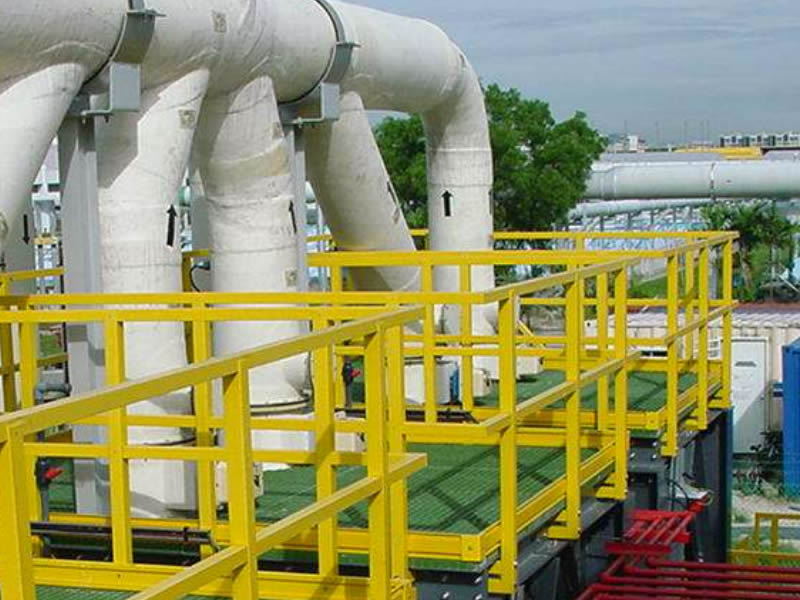
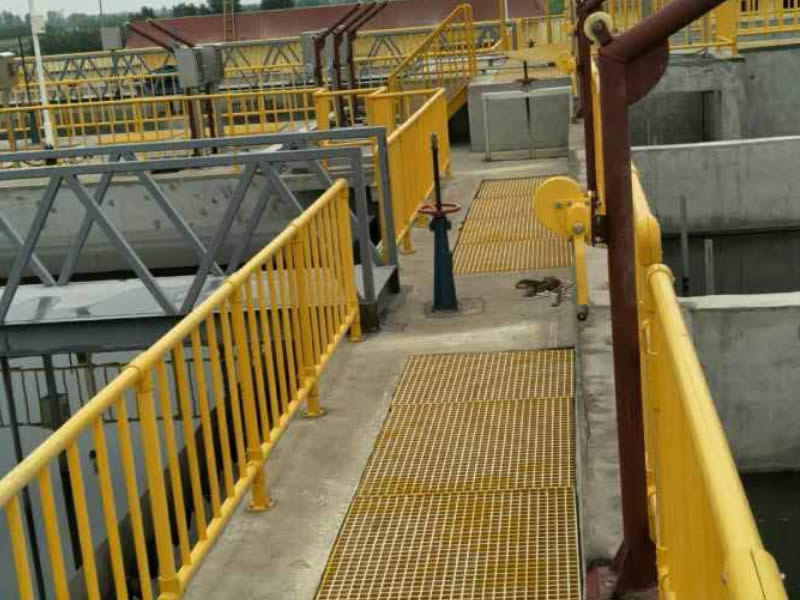
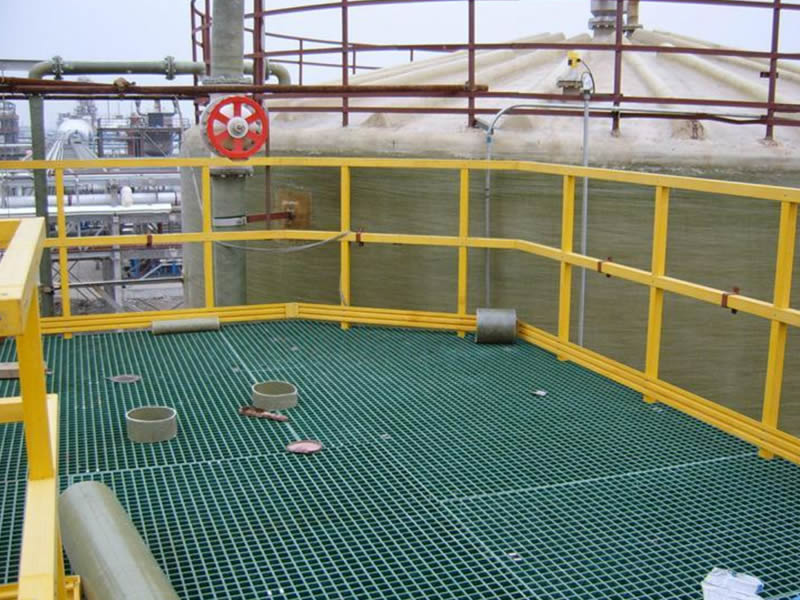
FRP Handrails: Installed in Landscapes and Recreational Areas
- Public Parks: Installation along pathways, bridges, and scenic overlooks for safety and aesthetic appeal.
- Botanical Gardens: Used on walkways and around display areas to provide a durable, weather-resistant railing system that blends with the natural environment.
- Hiking Trails and Nature Reserves: Employed in sensitive ecological areas where non-corrosive and environmentally friendly materials are essential.
- Waterfronts and Piers: Implemented along boardwalks, piers, and docks for durability against moisture and saltwater exposure.
- Golf Courses: Used for pedestrian bridges and around water hazards, offering a safe and visually appealing boundary.
- Zoos and Wildlife Sanctuaries: Installation around observation areas and along visitor paths, ensuring safety while minimizing environmental impact.
- Amusement and Theme Parks: Employed in areas with high foot traffic and around attractions for crowd control and safety.
- Outdoor Sports Facilities: Used in stadiums, arenas, and sports complexes, particularly in spectator areas for safety and durability.
- Residential Community Common Areas: Installed in green spaces, communal gardens, and outdoor communal facilities within residential developments.
- Urban Renewal Projects: In revitalization areas such as riverfronts, community squares, and public art installations, providing safety and enhancing the aesthetic appeal.
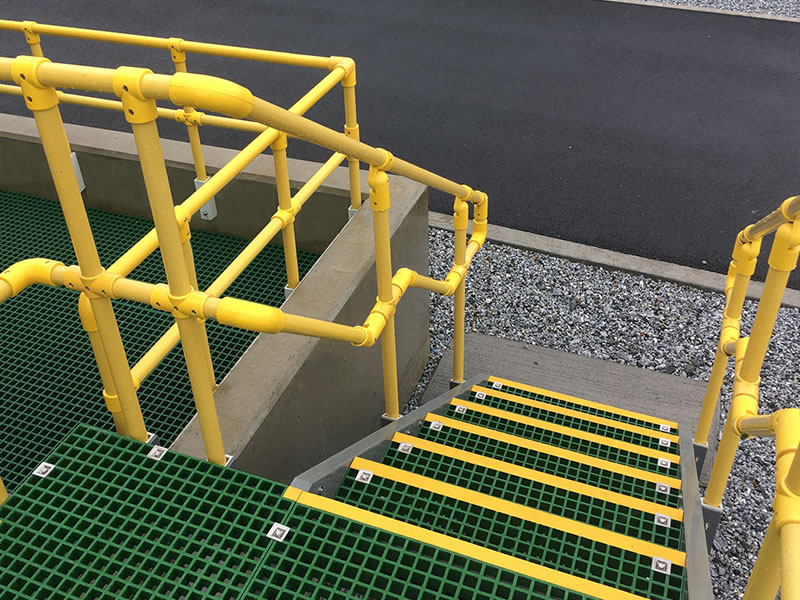
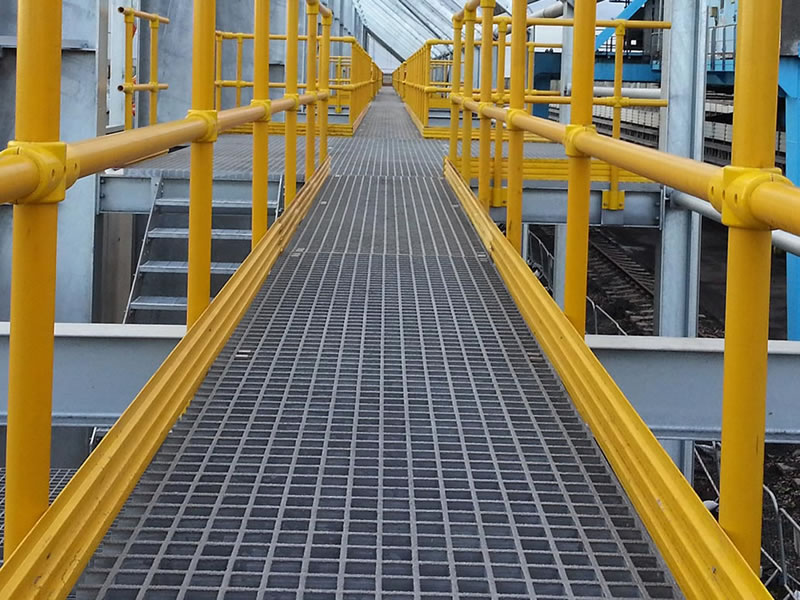
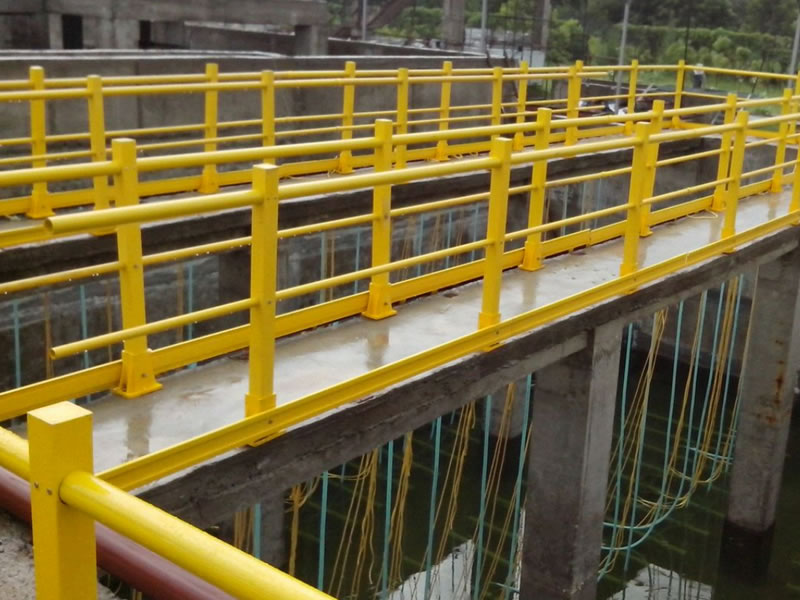
FRP Handrails: Installation Precautions
- Safety First: Always use protective gear during installation, including gloves, safety glasses, and hard hats.
- Correct Tools: Ensure you have the appropriate tools, such as drills, saws, and fasteners, specifically designed for FRP materials.
- Surface Preparation: Before installation, clean and prepare surfaces thoroughly to ensure a secure fit.
- Proper Alignment: Accurately measure and align the handrails to ensure they are straight and level.
- Secure Fastening: Use recommended fasteners and adhere to the specified torque settings to avoid over-tightening, which can damage the FRP.
- Weather Considerations: Be mindful of temperature and weather conditions during installation, as they can affect the curing of adhesives or the expansion of materials.
- Post-Installation Inspection: After installation, conduct a thorough inspection to ensure all components are securely in place and there are no loose parts.


